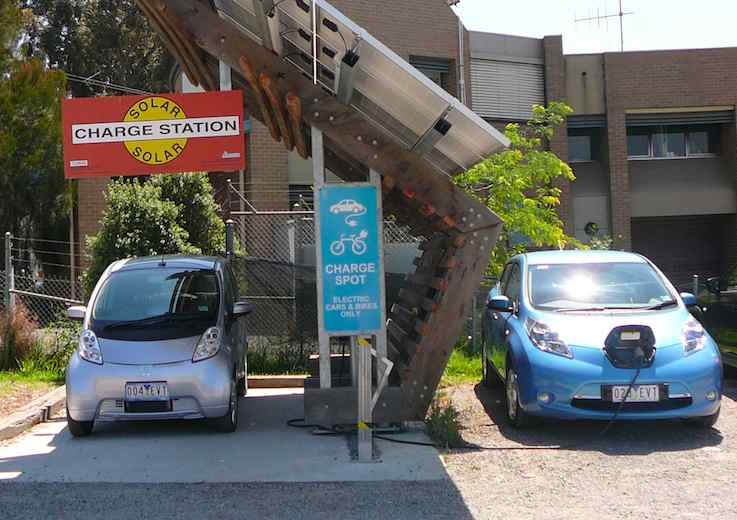Close your eyes and picture yourself in a sleek new electric car – powered by clean electricity, emitting no pollution, silent and cheap to run. Parked in your garage, it stores energy from your solar PV system to provide mobility and power your home.
But is it going to happen?… And if so, how and when?
The vision of parked vehicles being used for grid storage has captivated people since EVs began (re)emerging as a viable transport option – wind and solar variability could be solved through intelligent application of an underutilized asset! Now with solar uptake booming in the U.S. and over 180,000 plug-in vehicles on the roads providing 4 GWh of potential storage capacity, the time has surely arrived to pull the pieces together?
The good news is that the technology is here or not far away. Advanced vehicle/grid control systems can protect the battery and manage energy flows in line with network needs. Interoperability across the various technology interfaces is advancing through the evolution and application of recognised standards. These developments will provide enhanced visibility and control for network and vehicle operators, allowing them to cooperate easily, conveniently and for shared benefits.
The story from here will reflect the realities of car use, the insights from Big Data, and the power of visual association.
Experience has shown that vehicle owners are largely, but not entirely, predictable – most use their car during the day and charge overnight. While charging tends to happen when it is cheapest, drivers manage charging in line with the primary use of the vehicle as transport. For energy service providers this translates to uncertainty – not a great foundation for business success. When viewed alongside the relatively small storage capacity of individual vehicles relative to stationary batteries, the focus for the foreseeable future will be on the alternative.
The areas of opportunity are instead those with more certain benefits that outweigh the cost and effort involved in setting up the vehicle-to-grid system.
An obvious example lay in use of the cars for emergency back-up power, when access to electricity may be life-saving. Equipment available now allows EVs to be used as a direct power supply independent from a hardwired electricity network. Use of the vehicles as storage within independently capable and controllable microgrids has been identified as a means of providing increasingly valuable system resilience.
For non-emergency applications, the pathway will be through evolution of existing grid-connected installations – analogous to that unfolding for microgrids above. Electric vehicles often operate out of locations that also feature distributed energy resources, such as solar PV. This coincidence is intended, as the visual association of the two technologies provides significant “brand value” while in the early-market adoption phase.
Through analysis of the energy and vehicle activity data at these locations, much can be discerned about the opportunity for surplus energy to be directed to the cars when parked. Individualized system design and control strategies can then be developed so as to deliver more certain benefits for only incremental investment. These projects will serve as a stepping stone for the mainstream, commoditized solutions of the future, where cheap, clean and locally-produced energy is used for transport or stored in vehicles for later re-use.
Bringing these individual, site-based solutions together in the wider network context will unfold as local electricity market regulation allows and incentivizes it. Regional operators may manage a number of distributed energy resources from across their network collectively as Virtual Power Plants. Projects of this type are already underway, endorsing the view of the future utility customer as a ‘prosumer’. Through this model, a car may provide grid support from various locations within a network as it relocates over the course of a day – a scenario that represents the ultimate realization of the vehicle-to-grid concept.
For individuals who want to get the ball rolling, the first step would be to compare a record of vehicle movements with the generation profile of your home solar system. Understanding the overlap will highlight the potential to generate your own transport energy. Managing your EV charging to consume surplus energy generation may provide a financial benefit that would offset the absence of a feed-in tariff.
In the near-term the cost and effort involved will likely appeal only to the minority for whom the sometimes intangible benefits really matter. These ‘early-adopters’, who will be strongly motivated by the visual synergy of co-located vehicle charging and solar generation, are a feature of any new technology adoption.
As the pathway seems clear and the technology is here, the future is now.

Kristian Handberg is a Principal Consultant with Melbourne-based cleantech start-up Percepscion. From 2010 to 2013 he designed and delivered the Victorian Electric Vehicle Trial. This article is based upon a February 2014 White Paper from the same author titled “Electric Vehicles as Grid Support”.








